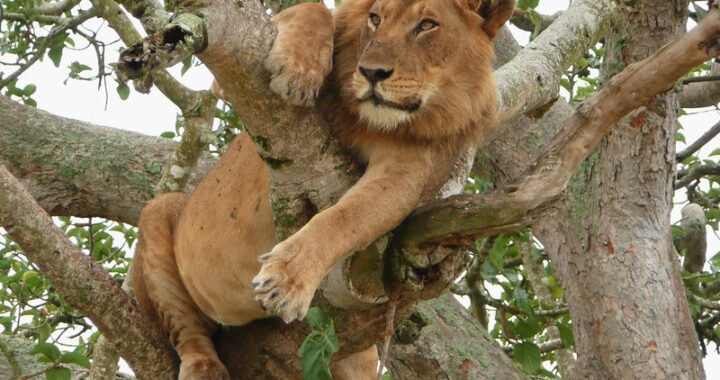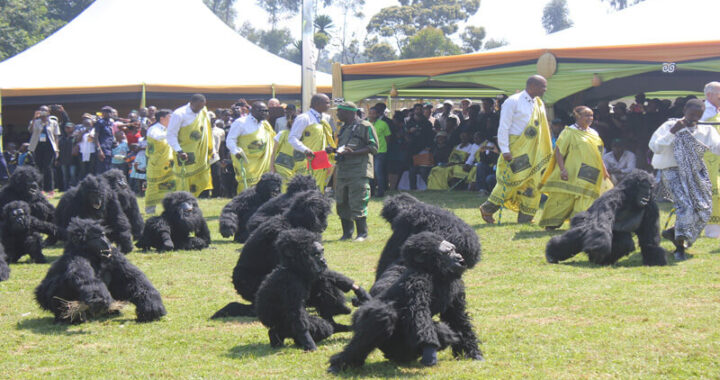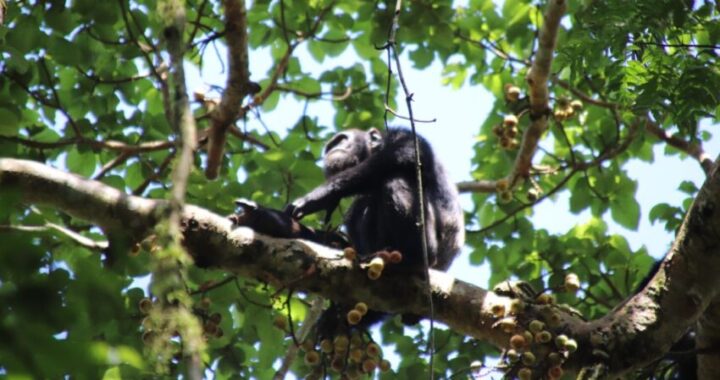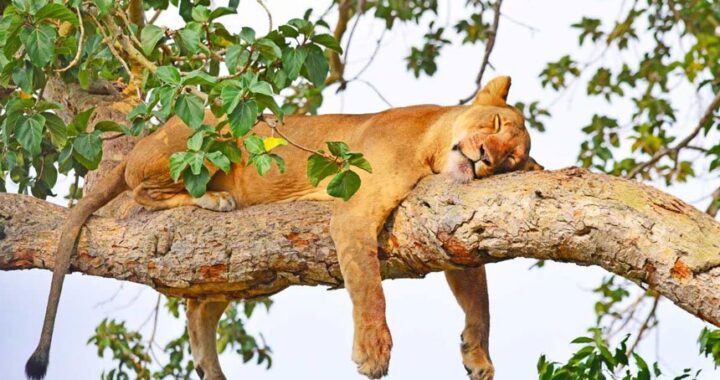Ishasha wilderness is the southern part of Queen Elizabeth national park famous for harbouring the tree-climbing lions and central African species including the Congo buffalo. The area is located along the borders of Uganda with Virunga national park in DR Congo and therefore serves as a wildlife corridor, allowing species to move freely across habitats.
For instance, the central African Congo buffalo (also known as the forest buffalo) is known to have come from Congo and now lives in Ishasha according to Uganda Wildlife Authority (UWA). Despite the unique wildlife encounters, Ishasha is often skipped by many travellers on Uganda safaris to Queen Elizabeth national park.
Uganda’s most visited destination received 95,340 visitors in 2022 of which the majority spent more time exploring the northern Kasenyi plains, which is the main sector for tourism activities with the visitor information centre at Mweya peninsula. This is due to the fact the park’s major attractions and things to do are found in Kasenyi including the Kazinga channel (45 sq.km long) which connects Lake George and Lake Edward.
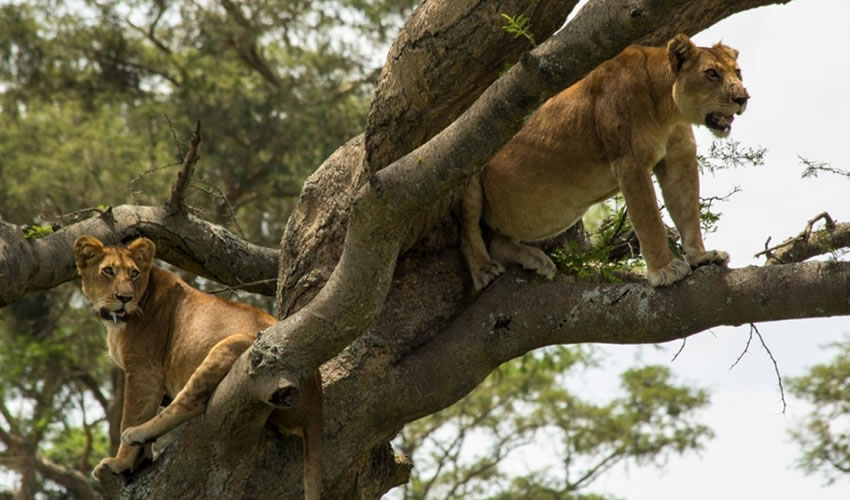
Kazinga channel offers boat cruise safaris where you get to watch elephants and buffaloes as they come to drink water along the banks, Nile crocodiles, large schools of hippos, and over 600 species of birds like African fish eagle. Kasenyi area also offers night game drives, nature walks, experiential lion research and chimpanzee tracking is available in the Kyambura gorge and Kalinzu forest reserves. In addition, there are over 52 volcanic crater filled lakes including Lake Munyanyange, which attracts migratory lesser flamingos from Lake Nakuru in Kenya between May to September. Since most people go to Kasenyi, Ishasha is still off the beaten path and is worthwhile exploring for wildlife viewing.
Nature of vegetation
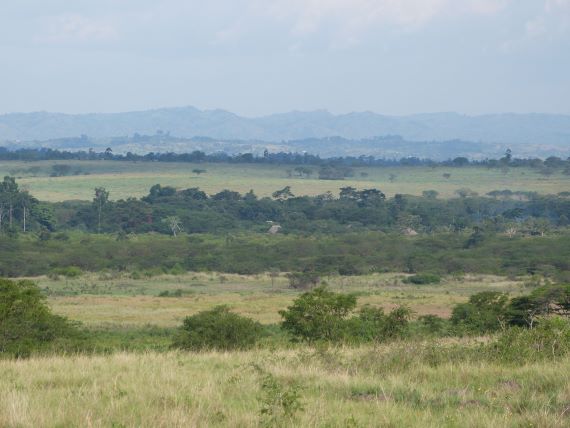
Ishasha lies in the rift valley that marks the boundary between east African savanna and Virunga national park. The 2 major rivers that drain the area include Ntungwe and the Ishasha river, which feed into Lake Edward. The area consists of different ecological zones including dense canopy riverine forests with tree species such as Ugandan iron wood and white star apple (Chrysophyllum albidum). Forest galleries transition into tall and short grass savanna plains surrounded by dry woodland forest thickets with huge fig trees where tree climbing lions seek shelter. These biomes meet and mix to support rich biodiversity including lions, both Cape and Congo buffaloes, African bush and forest elephants, topi, Uganda kobs, bushbucks, waterbucks, hippos, blue monkeys, and the tree climbing lions.
Travel tips to Ishasha wilderness safari
Ishasha has over 4 lodges and camping sites where visitors can stay the night and extend their time in the wilderness. For instance, the Ishasha wilderness camp, which is situated on the Ntungwe River’s banks, provides a variety of unusual experiences, such as bush dining, where guests may see elephants descend into the river to cool off.
To ensure longer stays, Uganda Wildlife Authority (UWA) has opened new trails such as the Ishasha hippo pool 1 and hippo pool 2, where visitors can take nature walks to watch hippos along the Ntungwe river. Those on a gorilla safari to Bwindi Impenetrable Forest or Mgahinga Gorilla National Parks can break up the trip by spending the night in Ishasha. The biggest advantage of visiting Ishasha is to increase the chance to spot tree climbing lions of East Africa in addition to topi and the Congo buffalo which aren’t found in the Kasenyi plains. Ishasha along with the Semliki national park, which is home to 40% of Uganda’s bird species including Congo basin forest biome species like the piping hornbill are ideal places for special interest travellers looking to see central African species in Uganda.
The Virunga elephant migration
Given that Ishasha shares borders with Virunga national park, migratory species rely on it to move freely across the 38,000 sq.km Greater Virunga Landscape. This area consists of over 10 protected areas interconnecting across Uganda, Rwanda and DR Congo including Volcanoes, Mgahinga, Virunga, and Queen Elizabeth national parks. It is also known as the Virunga Conservation Area and is rich in biodiversity including mountain gorillas, chimpanzees, golden monkeys, and African elephants.
Mountain gorilla trekking is at the top of the activities to do on safari in both countries. To promote conservation, the Greater Virunga Transboundary Collaboration (GVTC) was formed in 2013 and helps to bring together the tourism and wildlife conservation authorities to enhance cross border security for the benefit of wildlife and people. The GVTC role is to prevent poaching and illegal wildlife trafficking as well as monitor the wildlife populations. The frontline rangers witnessed the migration of over 500 elephants returning to Virunga national park from Queen Elizabeth national park in 2021.
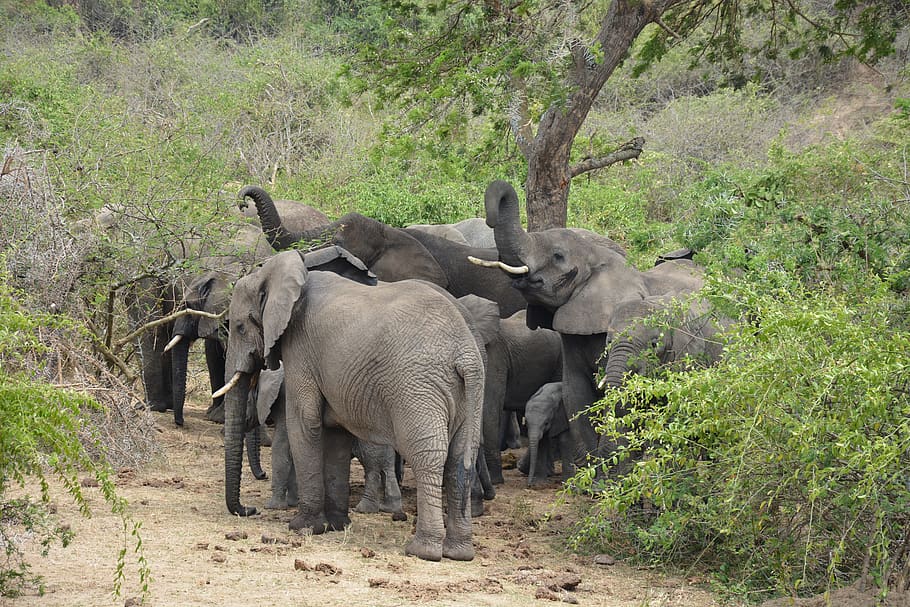
The Ishasha wilderness area might be the last elephant migratory route in the greater Virunga landscape. The animals have traditionally used this route and you might see them during your visit to Ishasha along the Ntungwe river camp. However, the longstanding conflicts in eastern DR Congo present challenges to elephant migration and have overtime forced them to flee to Uganda where it’s safe. Elephants are intelligent animals with the ability to escape when danger lurks in their territory.
As a result, the Virunga national park elephant numbers have been declining with about 120 individuals left according to the Congolese Institute for Nature Conservation (ICCN) while those QENP are increasing. The reduction in elephants led to an increase in vegetation cover, particularly in Lulimbi, the central sector of Virunga, where forest cover is overtaking grasslands. As a result, antelope species that prefer to graze in wide-open grasslands are forced to wander into community farmlands where they are hunted by poachers for bushmeat. In turn, this has an impact on the lions and leopards that feed on them. However, the return of elephants has since made significant changes in vegetation cover. There’s hope for game viewing to begin in the Lulimbi sector once Virunga national park reopens.
Accommodation in Ishasha wilderness area
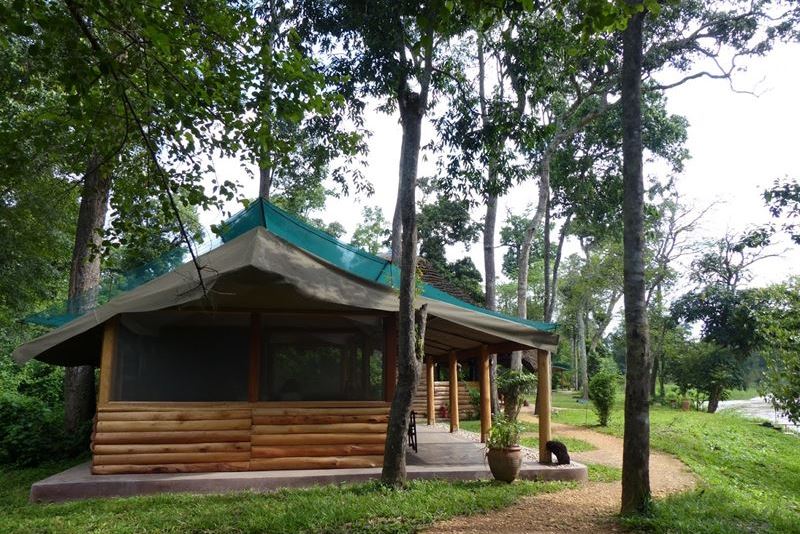
Ishasha offers a wide range of accommodations from camping to luxury including the Ishasha Ntungwe river camp, the only luxury tented camp in the area. Along the Ntungwe river, there’s also the Ntungwe tree lion safari lodge and the Bullbush river camp. Both places are ideal for nature lovers intending to stay overlooking the river and engage in bush dining and nature walks along the riverbank. Other lodges in the area but not on the river include Enjojo lodge and Ishasha jungle lodge.

